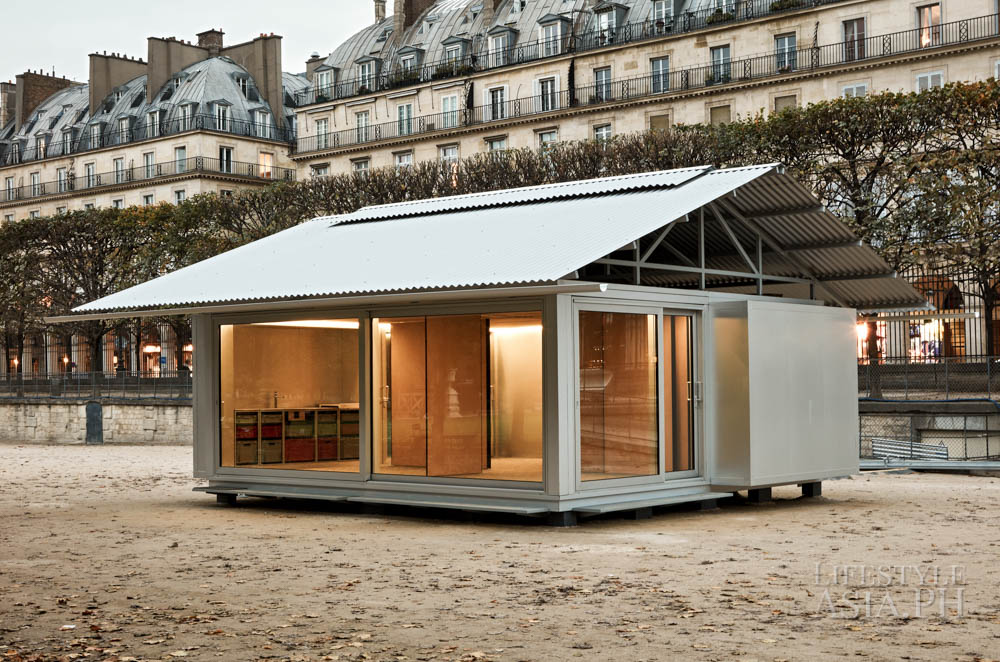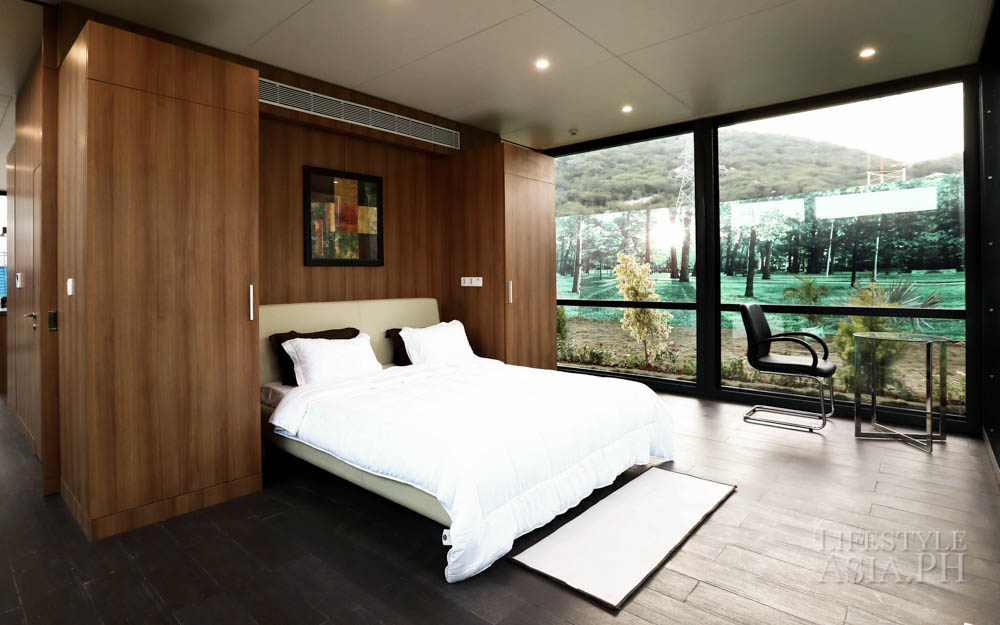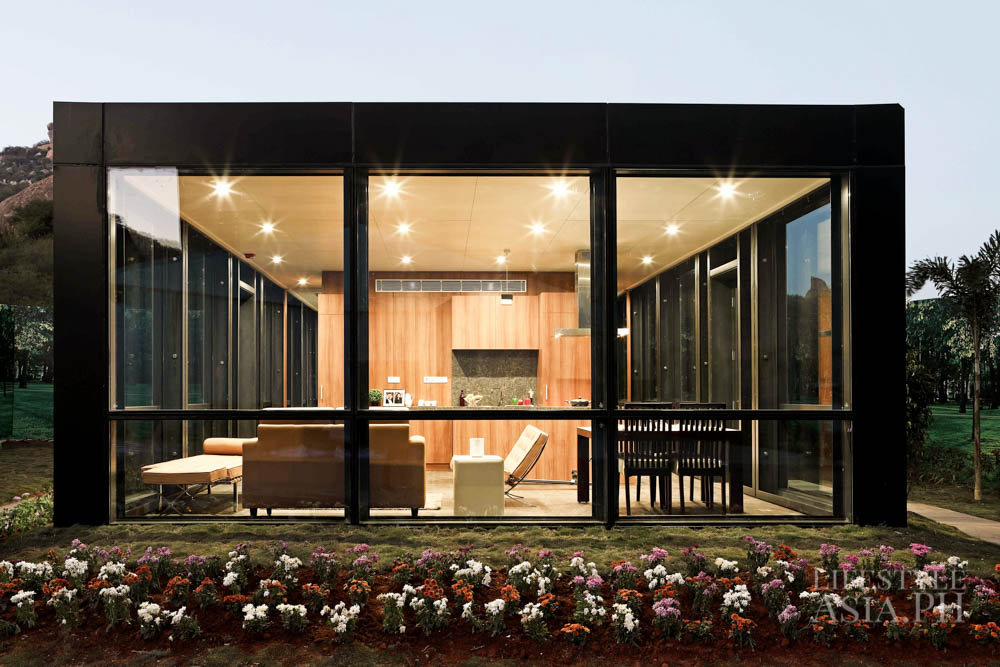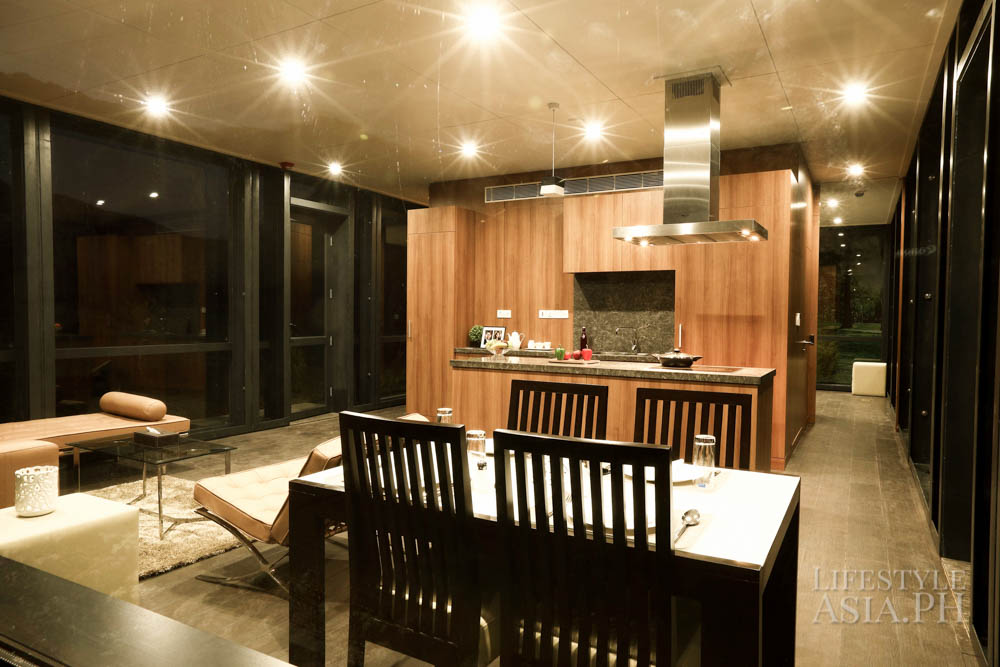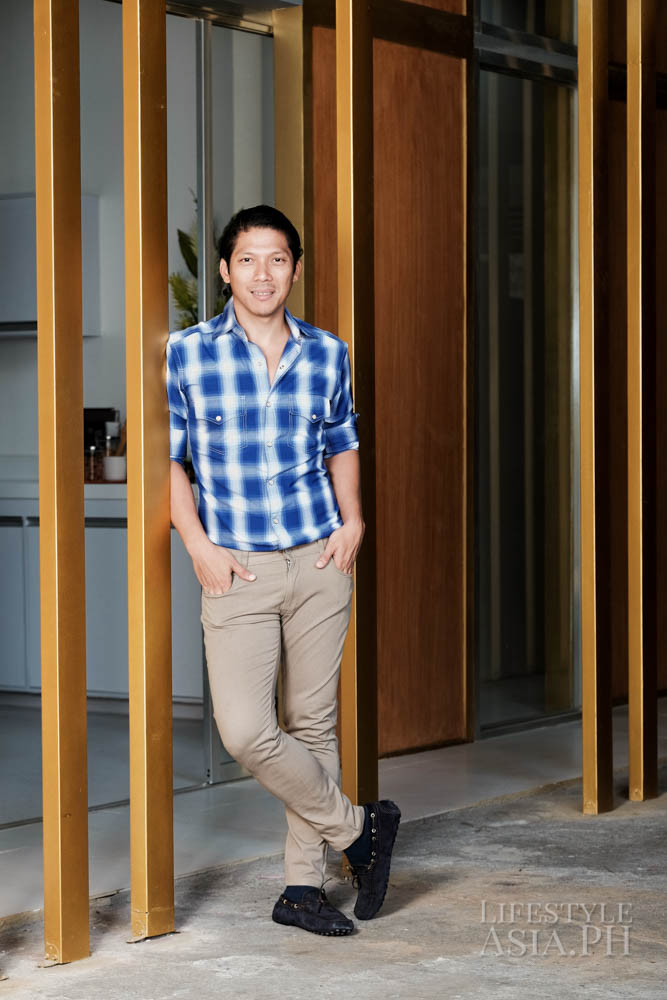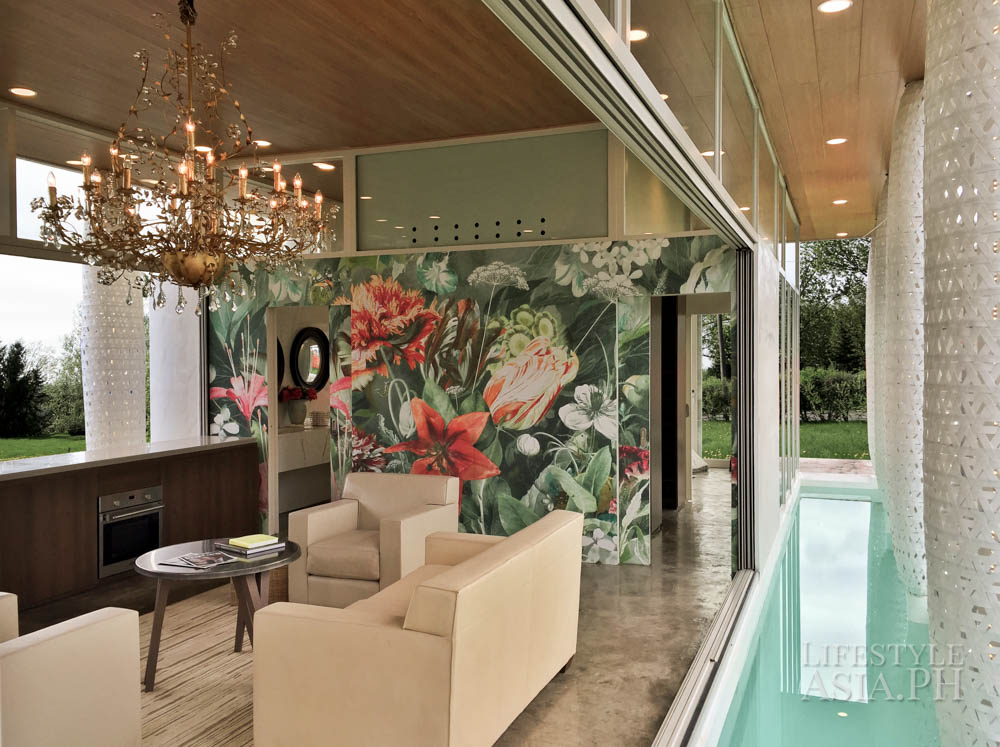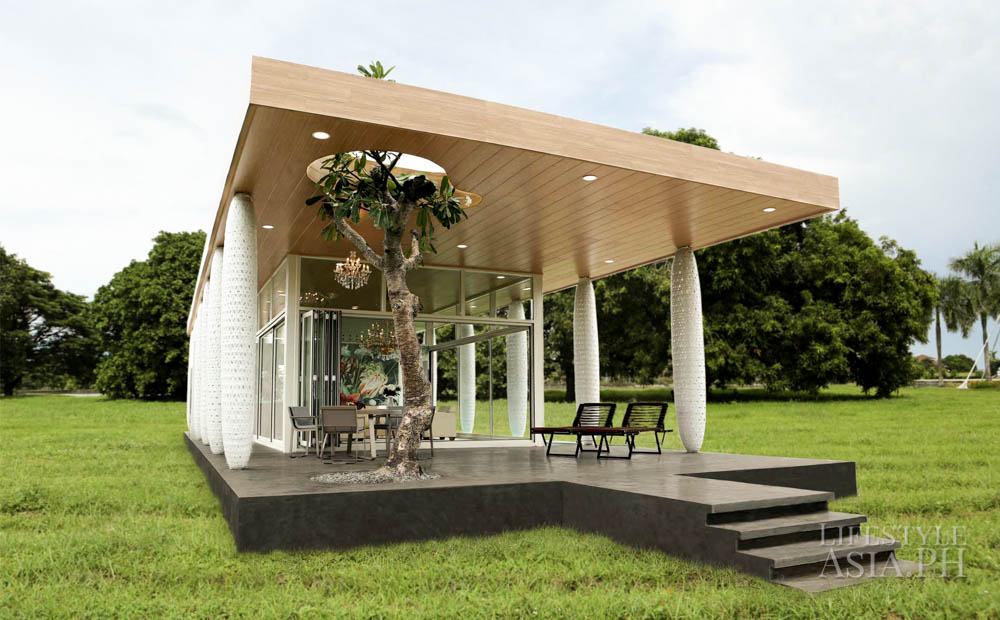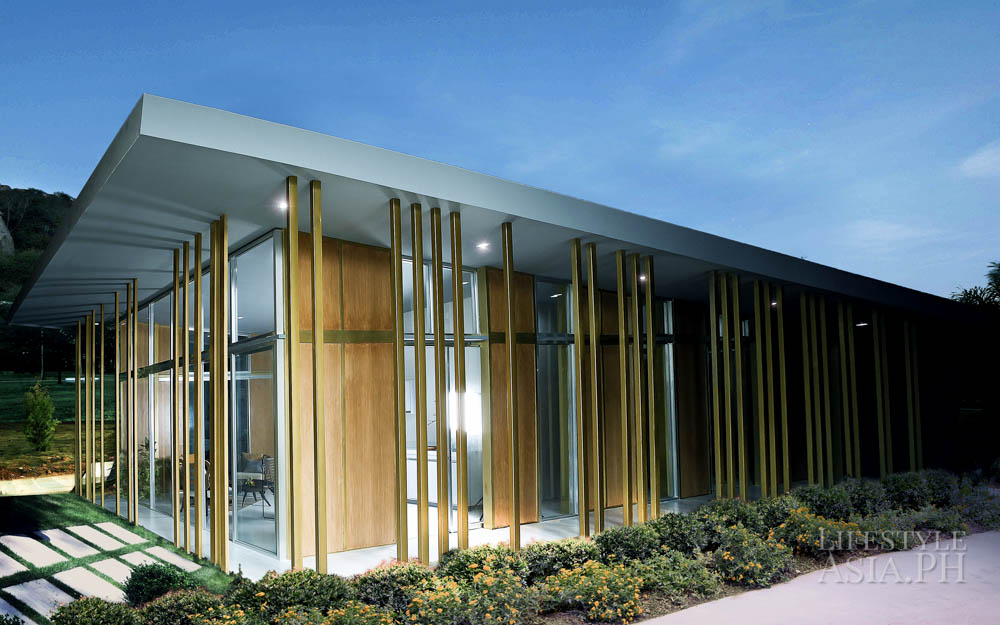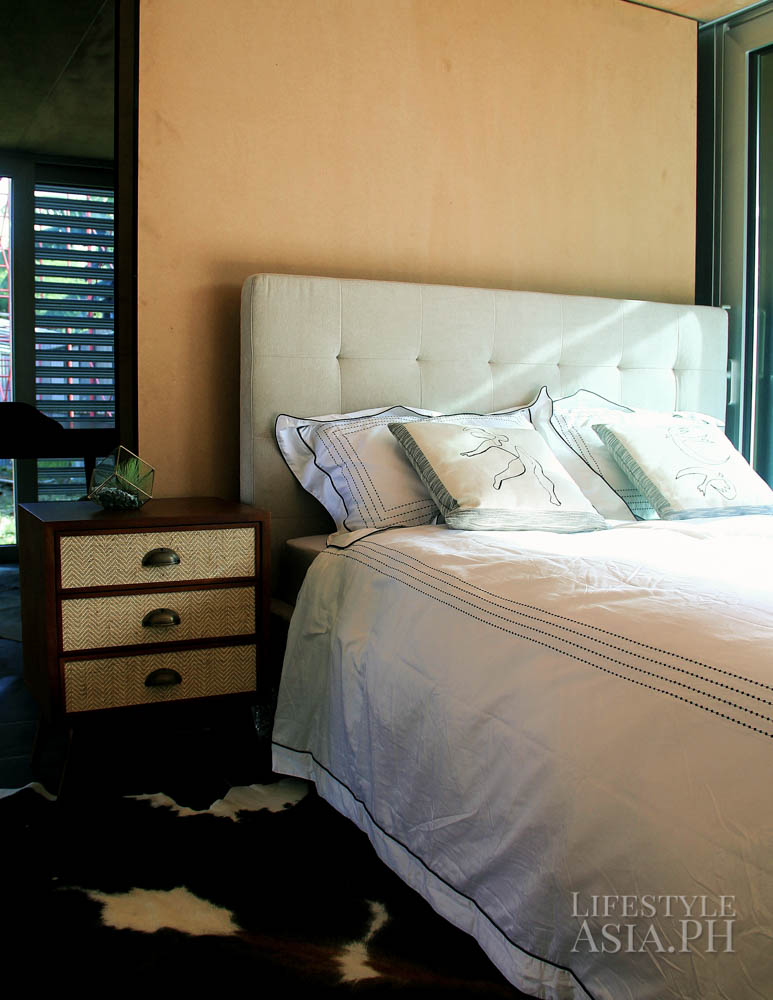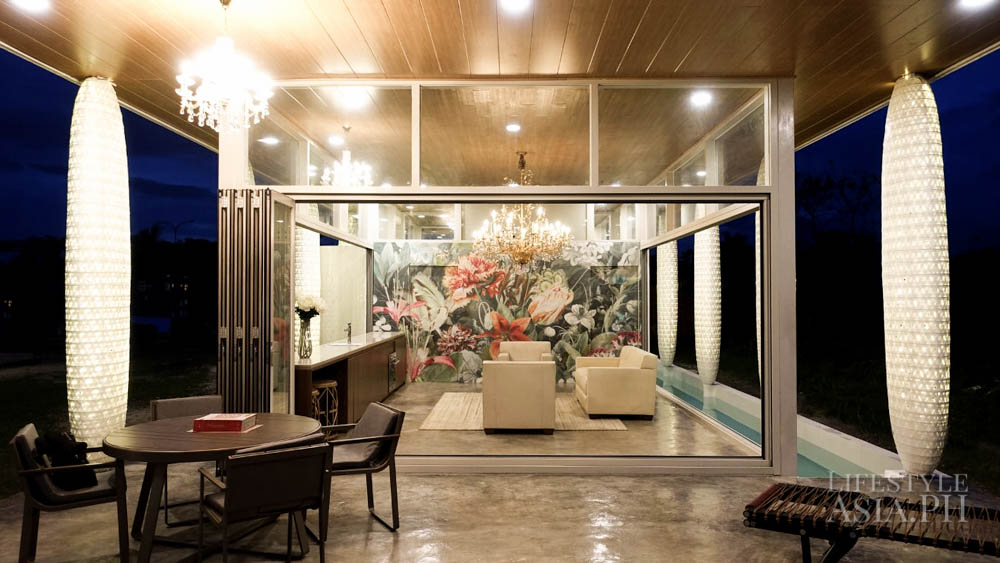A prefabricated home, dubbed the Butterfly House, designed by French-Brazilian architect Elizabeth de Portzamparc stands inside a large space in the south. Beams surround the home, which features two bedrooms, a living room and kitchen. Light pours in through glass panels. It is intended for a family of three, pre-fabricated according to the sensibilities of de Portzamparc, that is, modern design assimilated into natural environments.

The concept of providing prefabricated homes by renowned artists and Pritzker Architecture Prize awardees is the brainchild of Robbie Antonio. Years of experience working for the family business, Century Properties, allowed him to collaborate with established fashion and design labels from all over the world. Through Robbie’s efforts, Century Properties has introduced living spaces built in collaboration with brands like Missoni Home, Versace, Philippe Starck, Daniel Libeskind, Armani and Hermes, to name a few. Today, his is preoccupied by a passion project that aims to break boundaries and “disrupt” the industry.
Residences by Pritzker Prize Award-Winning Designers
“I started in 2015 from an idea,” says the businessman. When Robbie built his home, many were curious about the all black sculptural structure resembling an art piece. The first and only Pritzker prize designed residence in the country, Robbie’s abode inspired him to establish Revolution Precrafted. “People were intrigued. So I thought, what if I did this for a lot of people? Why not channel this curiosity for people to obtain but in a more expeditious and affordable way?”
Robbie played around with the idea of offering pre-designed homes by some of the world’s established architects and designers. Prefabrication of structures was the technology that allowed the realization of Robbie’s concept. “The technology was a means to an end. It allows us to ship them globally. From the onset, the ambition was to be global.”
He explains how Revolution is a departure from the real estate empire he and his family established. “It’s very different from what any major developer does. I wanted the highest trajectory of growth in a company, in an industry I knew very well. We are really more of a supplier. Here, we do not compete with developers, but collaborate with them,” says Robbie.
When the company was launched a year and half ago, prefabricated homes included structures designed by award-winning firms and design collectives, like Philip Johnson Alan Ritchie Architects, Marmol Radziner with Kravitz Design and Libeskind Design. Dutch designer Marcel Wanders also designed his first home for Revolution. The house, called Eden, features the “signature Marcel Wanders columns clad in synthetic textile, woven accordingly to local craftsmanship, lines the periphery, casting shadow during the day, and at night lighting up dramatically.”
A Home By Christian de Portzamparc
Proficiency in design and art has helped Robbie forge collaborations with reputable names in designing prefabricated homes. “It’s not just about getting a celebrity and doing a shoot with them for an ad. It’s more about forging partnerships, learning from each other, and charting new courses together. It’s a long process, and we have a large team of skilled engineers working with them from the ground up.”

Included in the list of The Artnet New Index’s Top 100 Art Collectors for 2016 alongside Bernard Arnault, Francios Pinault and Leonardo DiCaprio, he is also considered one of the World’s Top 5 Most Prolific Art Collectors by dotLuxury, and a part of Harper’s Bazaar’s Art Power List. Robbie is fluent in the language of art and design. “I’ve been working with celebrities, designers, fashion houses and other brands so I decided to continue in this path. But this time, I thought of doing it for a myriad of developers.” He is keen on sharing his passion for art with a wider audience, “I love partnering and collaborating with the best in the world so we can do more good and great. Now, we are creating other platforms with some of these collaborators to create spaces and experiences that can benefit others.”
Past experiences helped open the doors in making his vision a reality. “I happen to know a lot of major architects and designers in the world. From a socio civic point of view, I’ve worked with over a dozen Pritzker prize-winning architects. There has only been one awarded each year since 1979. I like working with the best in the industry.”

Design is the main component of Revolution’s prefabricated homes that sets it apart from others. “Many of the collaborators found the concept interesting and enthralling. They are used to working with different mediums.” He cites Zaha Hadid as an example. “She has designed homes for a major Russian millionaire worth over US$25 million, and now we are asking her to do the complete opposite. Christian de Portzamparc, who is another Pritzker prize award-wining architect, designed a penthouse in New York , which sold for US $101.05 million. Now, you can own one of his creations from Revolution for not even half a percent of that.”
Robbie does emphasize that another factor in partnering with such renowned names in the design industry has to do with experience and a good work ethic. “I have a moral obligation to all of them to do very well. I want our collaborators to be happy, as well as the end users. That’s the impetus for the entire team to do a great job.”
Several revisions and improvements are done before prototypes are approved. While the concept designs are enticing, some adjustments need to be made to create a beautiful and truly functional home. The design process can take from three to six months, but fabrication of mockups are the longest and hardest. There are technicalities and a lot of adjustments.”
Disrupting The Real Estate Industry
Revolution’s main objective is to supply other real estate companies. “We are talking with developers all over the world and partnering with the best in their respective territories. We look for landowners with a vision.”
He shares that Revolution is geared towards working with developers instead of competing with them. Robbie singles out the phenomenal success of Airbnb, a company with zero inventory as an example. “Here, I don’t need to compete with developers; I collaborate with a multitude of them. There is no need to be site-specific, and be caught in a bad cyclical environment because we are global.” He adds, “I wanted the highest trajectory of growth in a company, in an industry I know very well and where global players I know can become the company’s clients and strategic partners.”
As far as Robbie is concerned, disruptive enterprises create the greatest impact in changing an industry. “This concept was a means to an end. How do I create an impact on not just one country, but on several? How do I change how homes are being built, used, and financed? Disruptive companies are global. I am interested in building a culture that is so hardcore in its desire to rectify a traditional model that’s ripe for disruption.”
From the onset, Robbie’s direction has been to set to break convention and boundaries. He declares, “The aspiration has always been to be global. I am happy that I get to work with the best minds from both the East and the West, and to learn, from both traditions.”
Just recently, local designers who are also acclaimed internationally joined the roster of collaborators, “Incidentally, there’s an Asian Pivot. The Philippines is becoming a center for innovation, creativity, culinary development.” Kenneth Cobonpue and Budji +Royal Architecture + Design designed their first prefabricated homes. Architects Eduardo Calma and Anthony Nazareno are likewise working with him. He clarifies, “It’s not just about the name. It’s offering the best they can create in that particular function.”
A Livable Work Of Art
Building or acquiring a home is one of life’s milestones. It is a commodity that individuals are willing to spend for. Robbie offers a fresh perspective on the business of providing or building homes. “It’s also creating desire. When someone desires something so much, price becomes a none issue.” He makes a strong point by saying, “What is art? It is a piece of canvas that costs less than 10 dollars, but one is willing to pay a fortune for it. It’s the same concept. I want to create a desire so formidable that it becomes a need.”

The visionary who admits that his mind is constantly running with ideas expounds, “Anyone, if allowed, would like to live in a beautiful, desirable home. Imagine living in a house designed by a Pritzker for a reasonable amount. No one had done this. Wouldn’t you want to live in a home designed by a fashion icon like Daphne Guinness, or in the first house Marcel Wanders ever built?
Apart from aesthetics, the cost and time efficiency make the concept of prefabricated homes appealing. It takes at least 90 days for fabrication of the homes, and installation may be done within a week, depending on the location and topography. “It’s about democratizing design, fashion, interior design and architecture,” states the CEO of Revolution.
Communities Celebrating Art and Design
While the desire to create change in the real estate industry is the driving force behind Revolution Precrafted, Robbie expresses a larger purpose that has to do with the process of building commercial spaces. “The genesis was really to disrupt home living, and now it’s also community building with a heavy design, beauty and visual component. We have gone beyond just creating homes by also doing pop up retail, restaurants and modular work stations.”
A series of modular restaurants in partnership with Enderun are well on the way for its launch. A series of pop up retail spaces to be put up all over the country for Zalora, Asia’s number one online fashion destination, is also underway. There is also a prefabricated fitness center done in collaboration with Victoria Secret supermodel Helena Christensen and her partner Camilla Stærk on the drawing boards.
Excitement over the building of Revolution’s four prefabricated museums by Pritzker prized architects is apparent in the way Robbie speaks. “Imagine a space where you have a piece by Ronald Ventura with a Jeff Koons. I want us to have a place where people will have access to a Picasso and other local and international masters. This is a means for starting a new dialogue among countries and creating connections with other cultures. It’s not just about possessing but more about sharing. Revolution Museums, which will be built on Batulao Artscapes, will provide that.”
This new cultural destination will be an hour and a half away from Makati’s Central Business District and will also feature other amenities, including homes, health and wellness centers, a beach club and a culinary hub. “The challenge always lies in creating value. How do we create spaces to build a complete, self-sustaining community? We want to deliver a lifestyle and not just homes. This, to me, is the creation of a true distinct value.”
SEE MORE PHOTOS OF PREFABRICATED HOMES…
Text by Bianca R. Salonga
READ MORE DESIGN RELATED STORIES…
